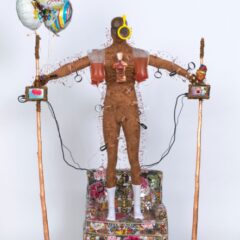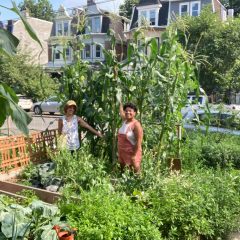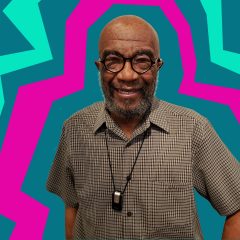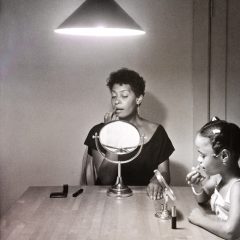This week’s Weekly has my review of Mark Dion’s Travels of William Bartram–Reconsidered.” Below is the copy with some pictures. More photos at flickr. See Libby’s post for more.
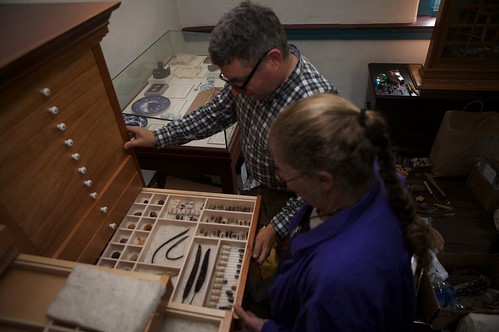
Mark Dion and curator Julie Courtney. Image by Aaron Igler
Mark Dion’s “Travels of William Bartram—Reconsidered” at Bartram’s Garden features old-fashioned display cases of objects collected on a journey coupled with up-to-the-moment documentation of the journey on a whiz-bang interactive website. Part Steve Jobs, part Victorian-era science project, the exhibit is lots of fun and educational to boot.
Dion makes work fueled by an interest in nature and mankind’s relation to it. But while other artists paint or sculpt, Dion’s modus operandi is collecting, organizing, categorizing and then sharing with the public what he’s found. He’s a Victorian kind of guy.
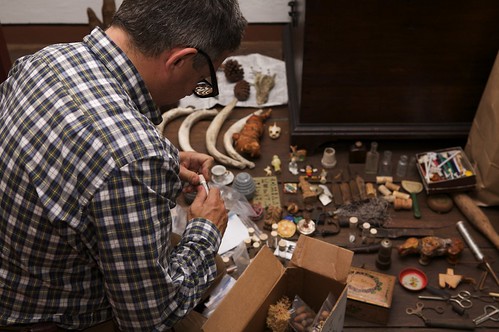
Mark Dion and his specimens. Image by Aaron Igler
For this project Dion journeyed to Florida to collect specimens while retracing the route of the 18th-century Philadelphia naturalist and artist William Bartram. Bartram collected only plants (the basis of his world-renowned botanical garden). Dion plucked some botanicals but also collected objects from the beaches, swamps and flea markets of Florida such as cigarette lighters, fishing lures, alligator tchotchkes and the like. These specimens of man’s footprint on the land are interwoven with the nuts and twigs and other things collected along the way.
Dion’s collectibles, like Bartram’s, were mailed back to home base at Bartram’s Garden. Some specimens are now in 18th-century cases, and others are in a couple of handmade curio cabinets the artist found along the way. There are not only shells, seeds, animal teeth and bones but also jars of river water and jars of alcohol with snakes and other things found in the woods.
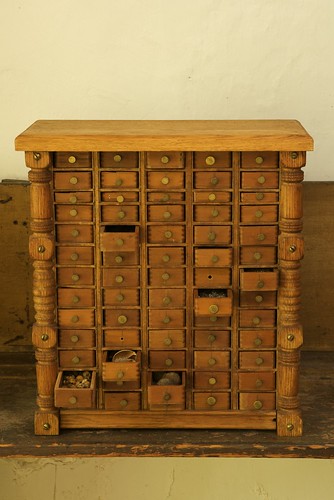
Because the intent of the trip was to gather what could be considered data about the world, and because the artist’s aim was to be all-inclusive, one group of unexpected specimens is the “Hate Archive,” hateful matter the artist found. Mailed back but not unboxed, it’s too awful to look at. We can all imagine the racist, misogynist things in the boxes.
The point seems to be: Who needs to look at it anyway? The data here is the volume—sad commentary for 2008.
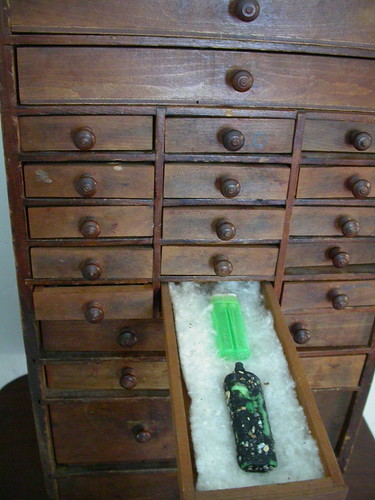
Cigarette lighters (one covered with asphalt) in Dion’s curio cabinet.
The artist puts himself in the display cases too. He includes a photo album, receipts from meals, a map that’s in tatters and a long hand-written list of birds sighted. But it’s online where you can see the artist living his journey like a grownup kid having fun: “riding” an amusement park alligator ride or catching catfish.

Meal, gas and canoe rental receipts.
Since the project’s start in 2007 the journey’s been documented and available online at a website that includes a journal by the artist, pictures, videos, lots of bells and whistles and interactive stuff. The epistolary nature of the journal in which the artist talks about obese people at a flea market or how happy he was to catch a catfish makes the whole enterprise seem like the diary of a Boy Scout on a treasure hunt. Which it kind of is.
I must confess I didn’t understand the whimsy and fun in Dion’s projects before this. Other projects I’d seen (like the one he did at MOMA for that museum’s reopening) didn’t seem so interesting. (Anyone digging in a demolition site will find lots of odd stuff.) But here, using the framework of the 18th-century explorer/naturalist, and recreating the initial journey, specimen hunt and archiving at the end, the whole thing works.
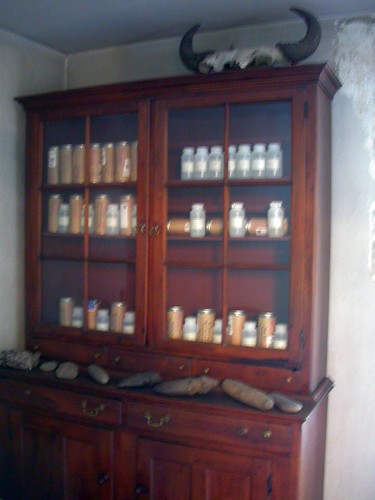
Water collected along the way and sent back ithrough the mail to Bartrams Garden.
The specimens collected speak to our contemporary obsessions with trash and the environment. And the jaunty Internet component in which you see the artist both working hard and enjoying his own data collection is great.
Dion’s highly idiosyncratic conceptual art unearths the story of how we live today, just like William Bartram’s collections of seeds and plants told the early settlers the story of America’s riches. Dion’s collection echoes Bartram’s with well-founded reflections on contemporary life.
Mark Dion: “Travels of William Bartram— Reconsidered”
Through Dec. 6. $4-$5.
Bartram’s Garden,
54th St. and Lindbergh Blvd.
215.729.5281.


